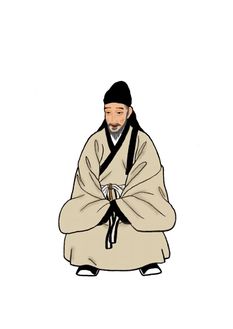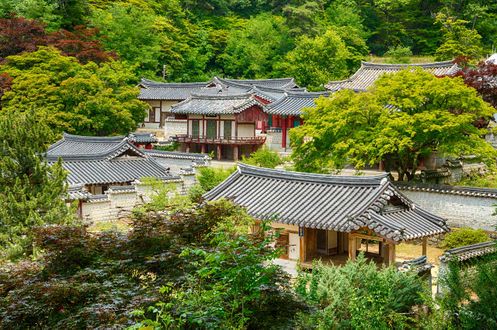Renowned Neo-Confucian Scholar, Yi Hwang
Yi Hwang (1501-1570), also known by his pen name Toegye, was one of the most revered Neo-Confucian scholars of the Joseon period (1392-1910).
Yi was born in Andong as the youngest of eight siblings. His father, who held the position of fourth state councilor, died just months after his birth, and he was raised by his widowed mother in relative prosperity. He first passed the basic civil service examination in 1527, but continued his studies at Seonggyungwan Academy until 1534, when he passed the highest civil service examination. Thereafter, Yi served in numerous public offices until his late forties. He then retired to his hometown to pursue his preferred life of self-cultivation and teaching. During this time, he wrote and taught prolifically, leading him to become a renowned Neo-Confucian scholar. He repeatedly turned down offers of public office over the years, but in 1567, at the age of 66, he was briefly called to public office. He retired for the last time in 1569 and passed away the following year. He was posthumously promoted to chief state councilor, the highest official rank.
During his life, he was involved with two important Confucian educational institutions. In 1550, during his time as magistrate of Punggi County (in Yeongju), he persuaded King Myeongjong to designate the local Baekundongseowon Confucian Academy as the first royally chartered Confucian academy and have it renamed to Sosuseowon. A decade later in 1560, he established Dosanseodang Village School (which was later expanded by his disciples into Dosanseowon Confucian Academy) in his hometown, Andong.
He is best known for his work, Ten Diagrams on Sage Learning (Seonghak sipdo), which he composed while he was briefly called to public office at the end of his life. The work sought to instruct the new king, Seonjo, who was just 15 when he ascended the throne, with lessons from the sage kings of the past. The text is brief, comprised of ten chapters which each include a diagram, a related text from a Confucian authority, and a short commentary by Yi himself. It was intended to be presented on a 10-panel folding screen and viewed repeatedly. The Ten Diagrams can be considered a summary of Yi Hwang’s learning and philosophy on Neo-Confucianism. [1]
Today, Yi Hwang is depicted on the 1,000 KRW banknote, and a major street in downtown Seoul is named after his pen name.
Related Articles
- Yi Hwang
- King Seonjo (Joseon)
- King Myeongjong (Joseon)
- Neo-Confucianism
- Joseon
- Andong, Gyeongsangbuk-do
- Yeongju, Gyeongsangbuk-do
- Seonggyungwan Academy
- Baekundongseowon Confucian Academy
- Sosuseowon Confucian Academy
- Dosanseowon Confucian Academy
- [Ten Diagrams on Sage Learning]]
- fourth state councilor
- civil service examination
- chief state councilor
- magistrate
References
- ↑ Ten Diagrams, Michael C. Kalton, Columbia University Press, 1988

